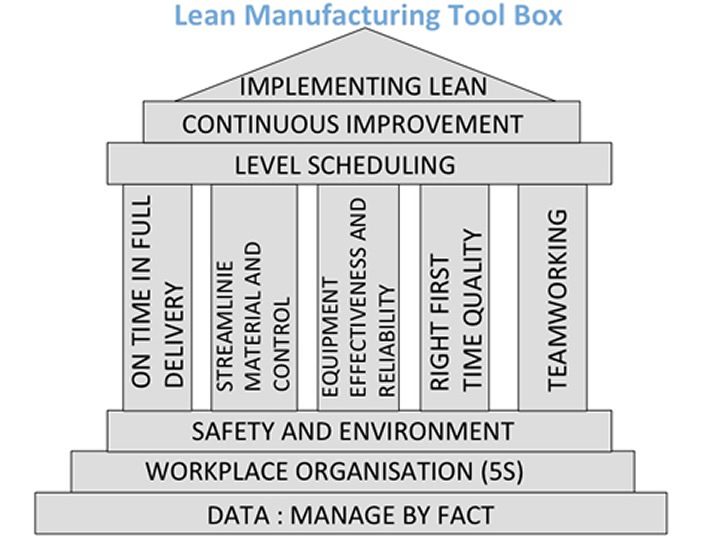 The strategic aim of manufacturing operating system should be to achieve the lowest cost base for product manufacture consistent with high levels of quality and service. The manufacturing process must be subjected to continual improvement to achieve competitive excellence. Best In Class businesses have learned how to make manufacturing capability a formidable competitive weapon. ConsultEP' visual consulting methodology together with Integrated Project Teams (IPTs) helps companies to change from board room to shop-floor, to set up manufacturing operation, and to implement operational improvements. We believe that early achievement of acceptance of need and commitment to change are key to getting pace and ensuring sustainable results. We outline below our approach in helping clients to develope their operating system based on our four-dimensional lean six sigma approach that will boost operational efficiency.
The strategic aim of manufacturing operating system should be to achieve the lowest cost base for product manufacture consistent with high levels of quality and service. The manufacturing process must be subjected to continual improvement to achieve competitive excellence. Best In Class businesses have learned how to make manufacturing capability a formidable competitive weapon. ConsultEP' visual consulting methodology together with Integrated Project Teams (IPTs) helps companies to change from board room to shop-floor, to set up manufacturing operation, and to implement operational improvements. We believe that early achievement of acceptance of need and commitment to change are key to getting pace and ensuring sustainable results. We outline below our approach in helping clients to develope their operating system based on our four-dimensional lean six sigma approach that will boost operational efficiency.
Operating system
Lean manufacturing is rapidly emerging as one of the major tools being used in the drive to improve manufacturing operational performance. We plus our associate partners have championed and developed lean manufacture for a number of years as part of its overall programme for improving our clients' competitiveness. We have help clients to implement lean manufacturing techniques that collapsed lead time by 50%, improve competitiveness at least by 10%, reduce inventory by 50%, and increase cash flow by 10%.
In organising to improve productivity, there are three fundamental questions which must ask:
- What will the future product portfolio to compete look like at strategic level?
- How to get the right "make vs buy" balance to achieve the targeted competitive product cost?
- What should the future footprint and capacity plan look like, which will lead to an action plan including the sites to be closed, consolidated, or prioritized for optimization?
Our four-dimensional lean six sigma approach
With the framework of strategic planning for organic restructuring comes operational planning for the reorganised business. This is the level at which implementation of lean manufacturing can be planned. The principle is not new, but the results have been unpredictable or disappointing, usually because the tasks have been approached in the wrong order or because an essential element has been left out. Experience over recent years has gradually permitted the evolution of a widely applicable approach which is being used by many companies in their drives towards competitive manufacturing.
The approach involves four elements, which is why Bourton Group, formally a subsidiary of Ingersoll Machine Milling Company, describes it as 'four-dimensional lean manufacture' or 4D. These dimensions are People (Multi-disciplinary teams), Engineering (Machine and Methods), Logistics and control (Material and Market), and and Accountability for Performance (Measurement), and they need to be implemented in the correct order. They are interdependent. Together they allow for continuous self-generating process of improvement which, left in isolation, will not work.
Boosting operational efficiency




